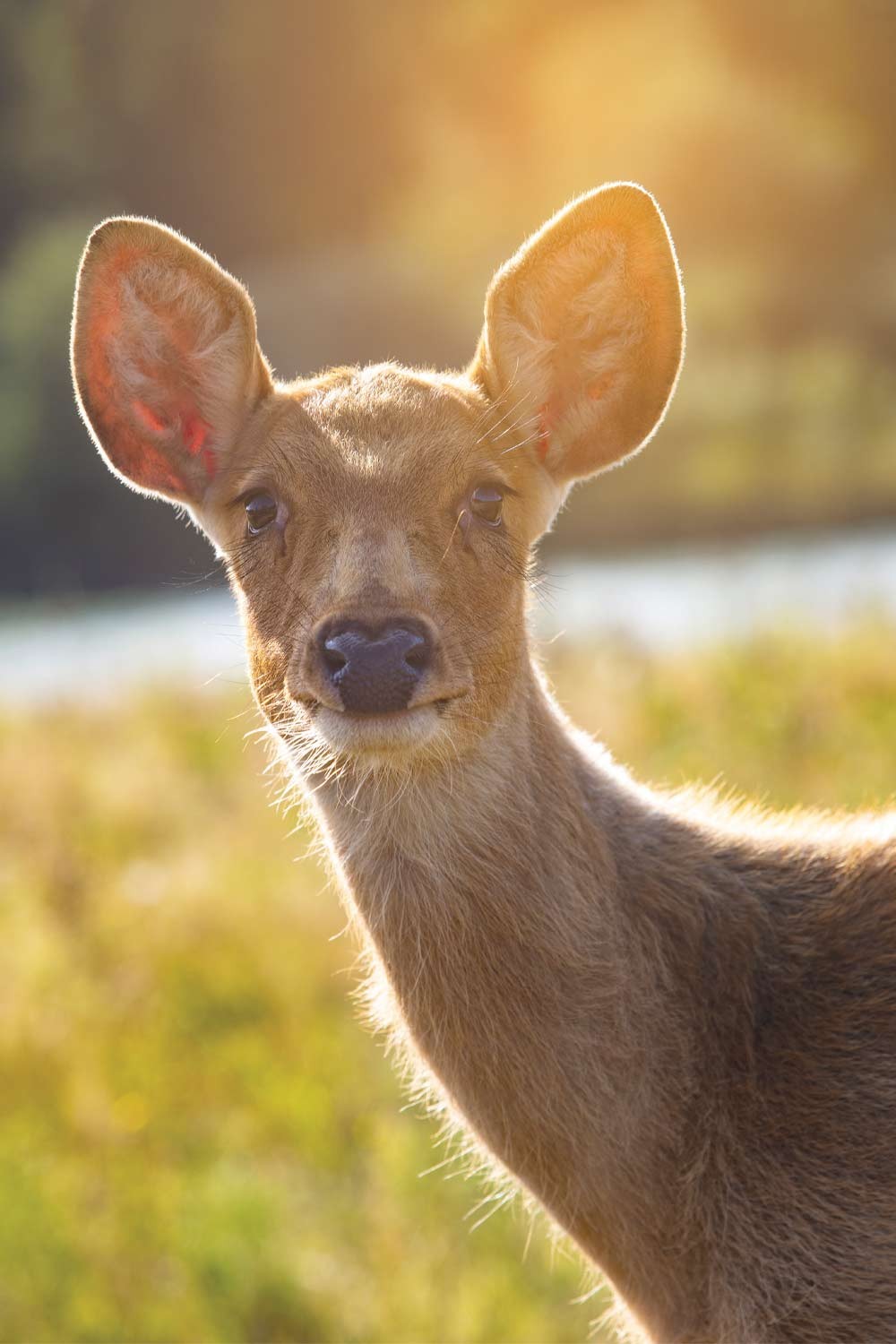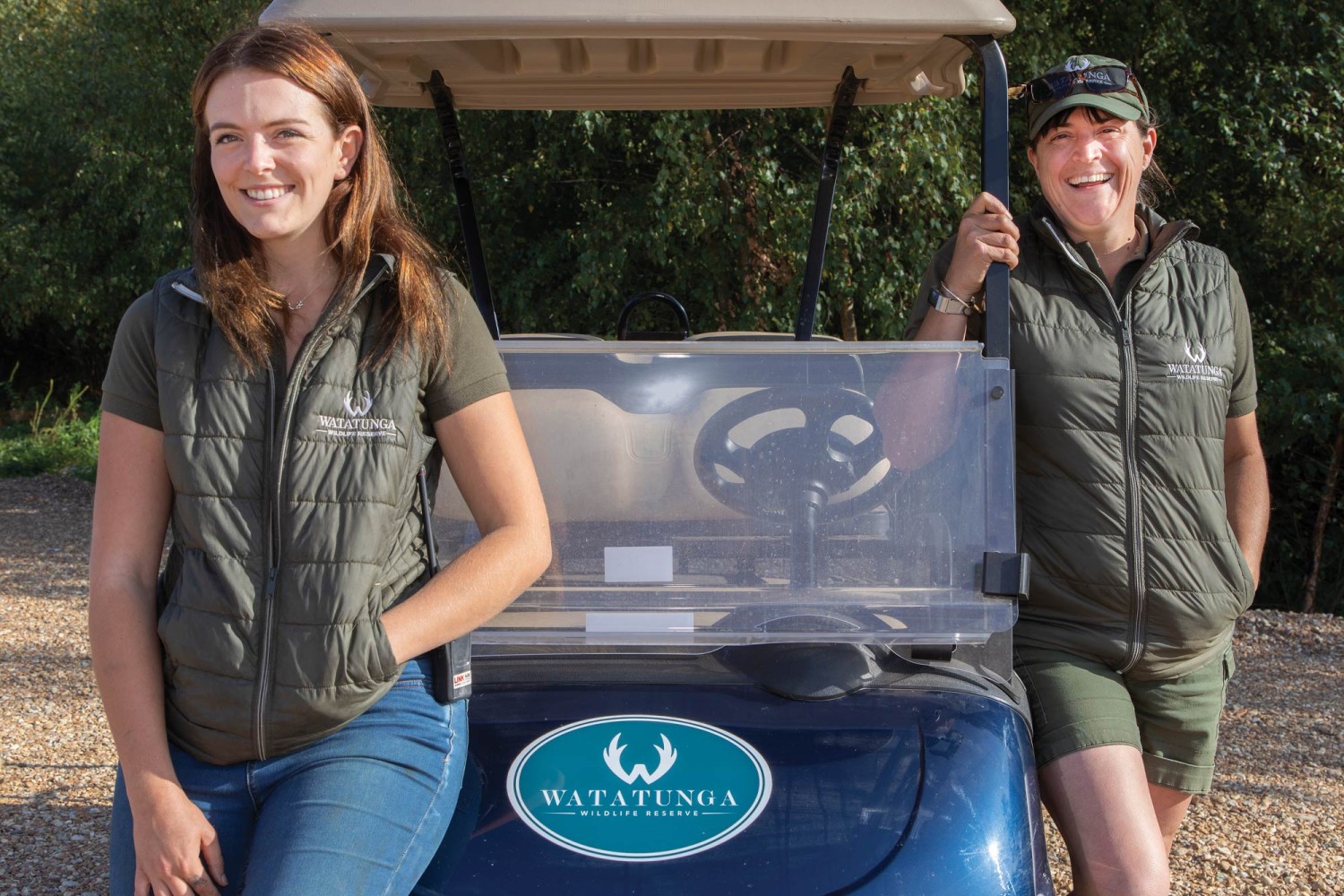
Taking a local walk on the wild side
In the middle of west Norfolk, Ed and Anna Pope have created a wildlife reserve to protect and conserve some of our most endangered animals, offering a truly unique experience. Welcome to Watatunga...
When you think of Watlington you tend to think of a quiet, sleepy, pretty Norfolk village blessed by a good rail link to Cambridge and London. You might reasonably expect to see some wildlife in the fields and hedgerows leading into the village and surrounding the village green - some barn owls, voles, shrews, squirrels, and maybe even a deer or two.
What you may not expect is for the village to be host to a wildlife reserve that’s probably one of the most important centres for rare antelope and deer breeding and conservation in the entire world.
Watatunga is a nature reserve created in 170 acres of disused quarry, sub-standard agricultural land, woodland and grassland. There are lakes where there used to be diggers, and there are open fields with swathes of wild flowers and grasses where there used to be monoculture crops such as sugar beet and barley.
“They’re over there!” shouts Ed Pope, the architect of the Watatunga Wildlife Reserve. He can hardly contain his delight as he points at some large animals about 20 metres from our vehicle. “Look, that’s a group of three Roan Antelope.” Sure enough, the majestic antelope are grazing quietly on the edge of a lake.
Ed’s wife Anna is equally enthusiastic as she points out a much smaller Fallow Deer that’s adopted the three antelope as its family.
“That little fellow knows they’re the tough guys,” she says, “so he likes hanging out with them.”
Watatunga, which is a linguistic mash-up of Watlington and sitatunga (a type of African antelope) has been a lifetime in the making.
Ed Pope has been a conservationist at heart since he was a small boy.
“I used to spend hours with my dad in bird hides watching the wild ducks,” he says. “Later, family visits to Africa further whet my appetite for working with endangered species and within the wider realms of conservation.”
Ed’s self-admitted obsession with the relationship between wildlife and conservation began with Water Buffalo. These were brought onto the family farm to help manage waterways and wetland areas - and learning to rear and care for these majestic beasts was the warm-up for a much wider range of deer, antelope and birdlife.
Although planning for the creation of Watatunga has consumed many years (and involved several amendments to the original plans) the last two years have seen Ed and Anna’s plans turn from dreams to reality.

More than 20 types of ungulate (animals with hooves) and rare bird species have been given a safe haven at the reserve in which to flourish. Among the new residents are Malayan Sambar, Barasingha, Hog deer and the almost extinct Père David’s Deer. It’s an extraordinary undertaking.
Ed and Anna also harbour hopes of reintroducing the Great Bustard to roam naturally in Norfolk, nearly 200 years after the very last one in the UK was shot in 1832.
Incredibly, we saw a rather fearsome male of the species wandering the reserve during our tour in an electric-powered buggy.
And that’s how Watatunga works. Although the reserve is primarily a conservation and breeding centre, it’s now open to the public with both on-site accommodation and day visits complete with electric buggies. There’s a variety of accommodation including Major’s Lodge - a neat wooden safari lodge positioned so guests can enjoy awe-inspiring views across the reserve.
The team comprises Ed and Anna with deer conservationist and ungulate expert Julian Stoyel, deer management expert Dee Dyer, and park warden Hope Flower.
Between them, they run the reserve, manage the breeding programmes, work with other conservation groups and breeding specialists, organise the guided tours, and supervise the holiday accommodation.
A further four local people help out on the site, and a number of local contractors have been heavily involved in the creation and development of the reserve.
Watatunga opened its doors to the public in July, just as the grip of COVID-19 began to slightly loosen. Although the launch took place under obviously different circumstances than those first envisaged by Ed and Anna, it wasn’t the lockdown victim it could have been.
“In many ways, the coronavirus situation was a good thing for the animals ,” says Anna. “Financially it wasn’t great, of course. We haven’t been able to attract the number of visitors as we’d have liked, but the subdued opening meant that the grasses had time to grow, and the animals had more time to settle. We’ve been able to get things moving at a steady pace - and that can only be good for the animals.”



Trailer tours are currently not available due to social distancing restrictions, but the excitement of driving an electric-powered four-seater buggy through a wildlife reserve has proved wildly popular with visitors.
Within the vehicle is a satnav system to help visitors stay on track. An on-board screen offers additional information, pointing out where certain species maybe seen or where a barn owl may be nesting.
You may only be six miles from the centre of King’s Lynn, but driving through the nature reserve it’s very easy to imagine yourself in the African savanna.
From some long brown-red grass the long horns of a Scimitar-horned oryx can be spotted, and wallowing in the nearby lake among the reeds is a pair of Water Buffalo. The haunting sound of oystercatchers played out as we simply sat watching the wonderful scene before us.
As we left the park, a few Vietnamese Sika Deer watched us with curiosity. And if we’d stopped and listened for long enough we might have heard the elusive sound of turtle dove cooing.
Ed and Anna have created a wildlife paradise in the middle of west Norfolk. It’s not just an incredible achievement, it’s also an inspirational project that will help save these beautiful animals for future generations. And it’s astonishing to think that it’s within half a mile of the A10.
With rules regarding social distancing changing on a regular basis, please check the reserve’s current opening times and the availability of wildlife tours and accommodation on the website at www.watatunga.co.uk - which also has details of the reserve’s gift vouchers.

